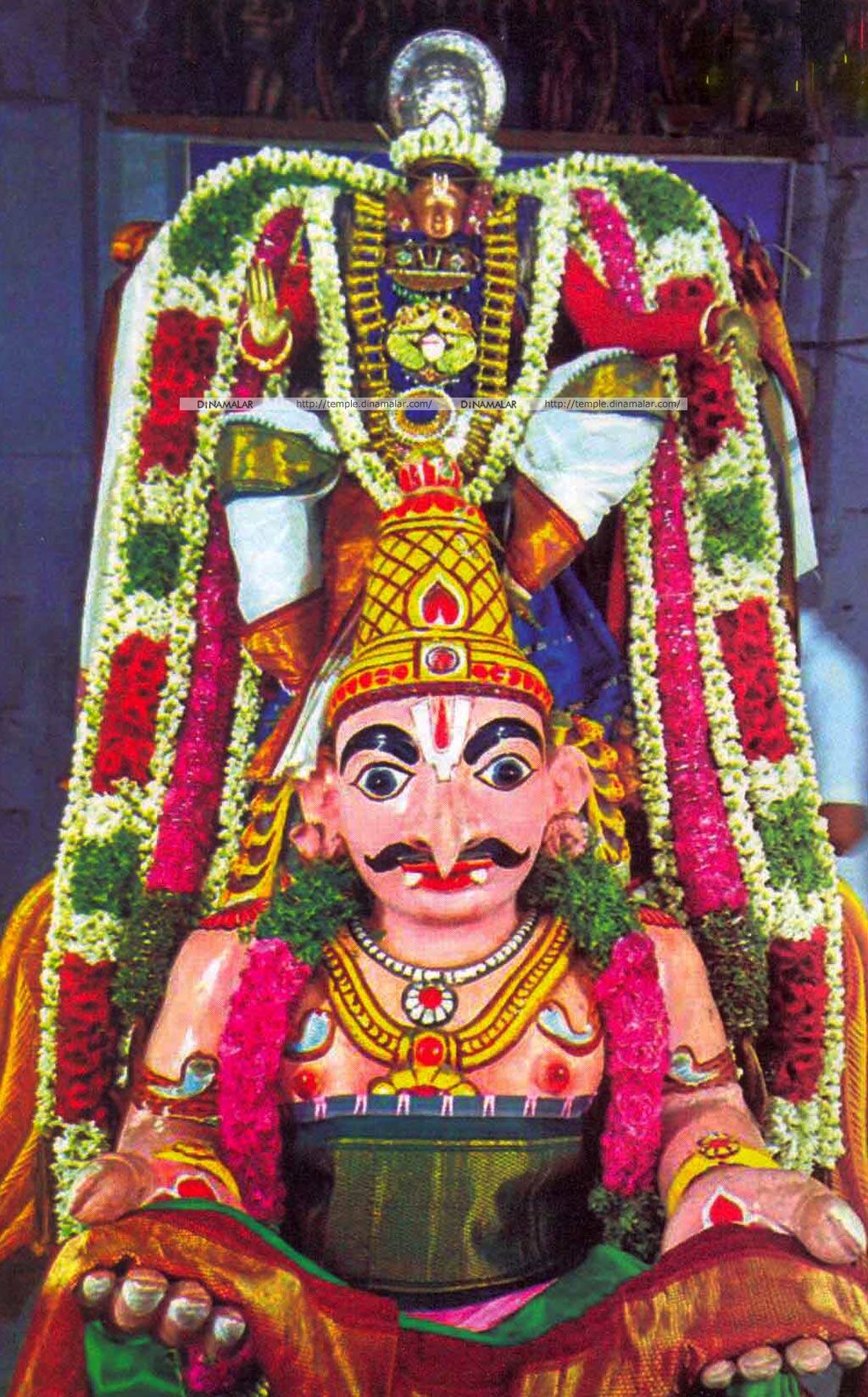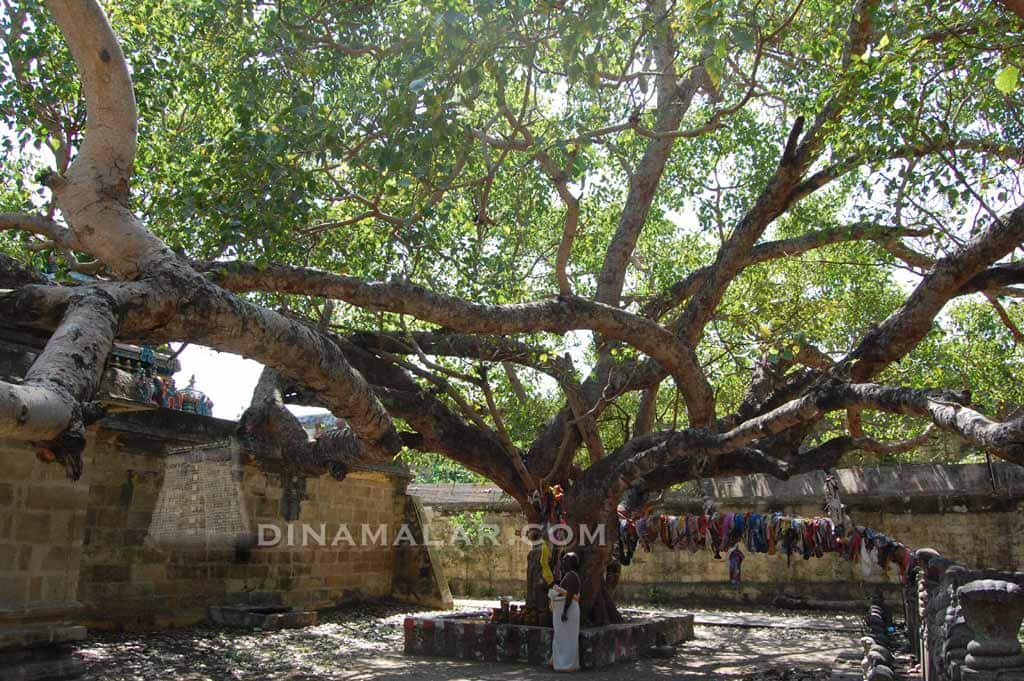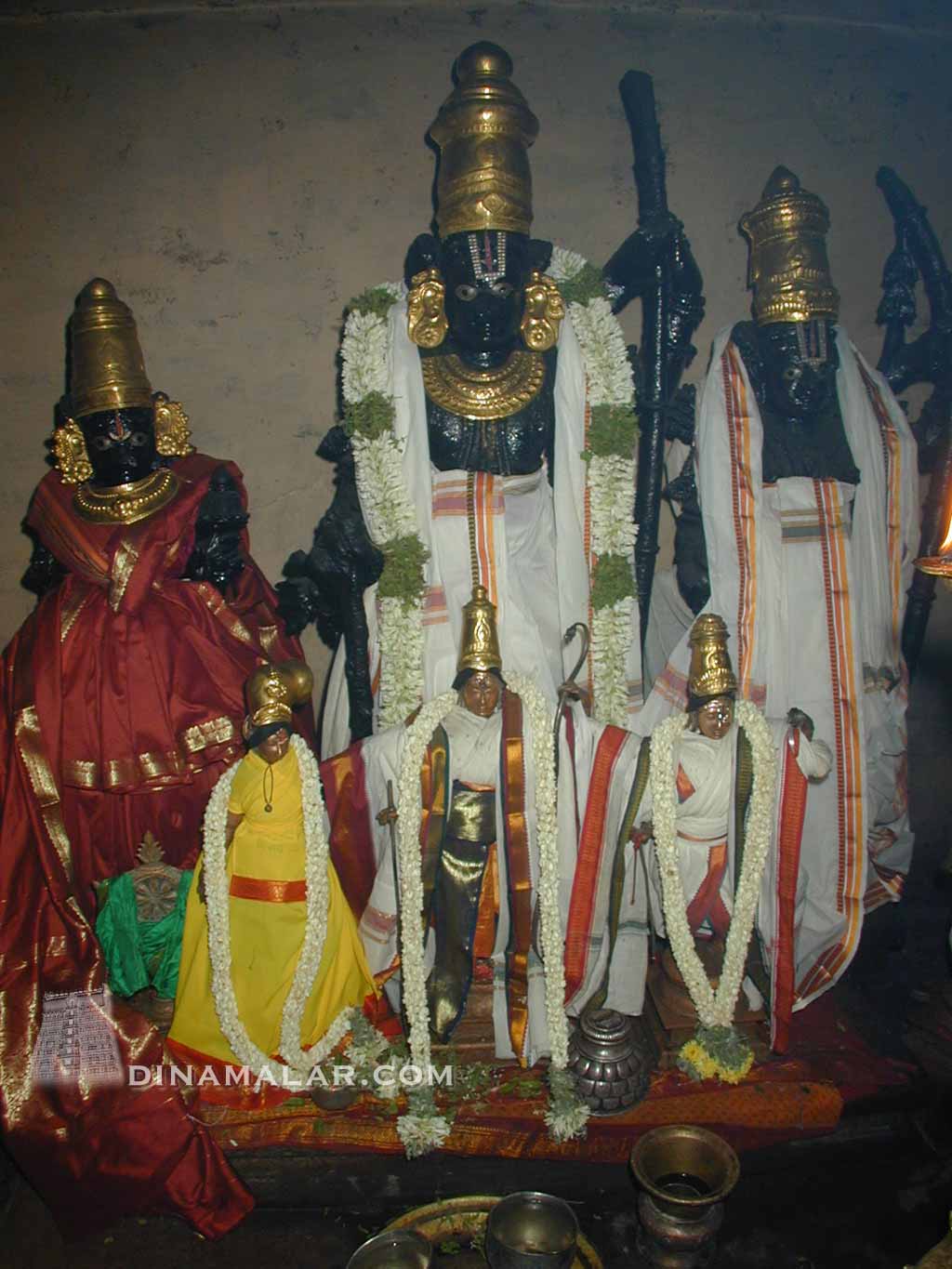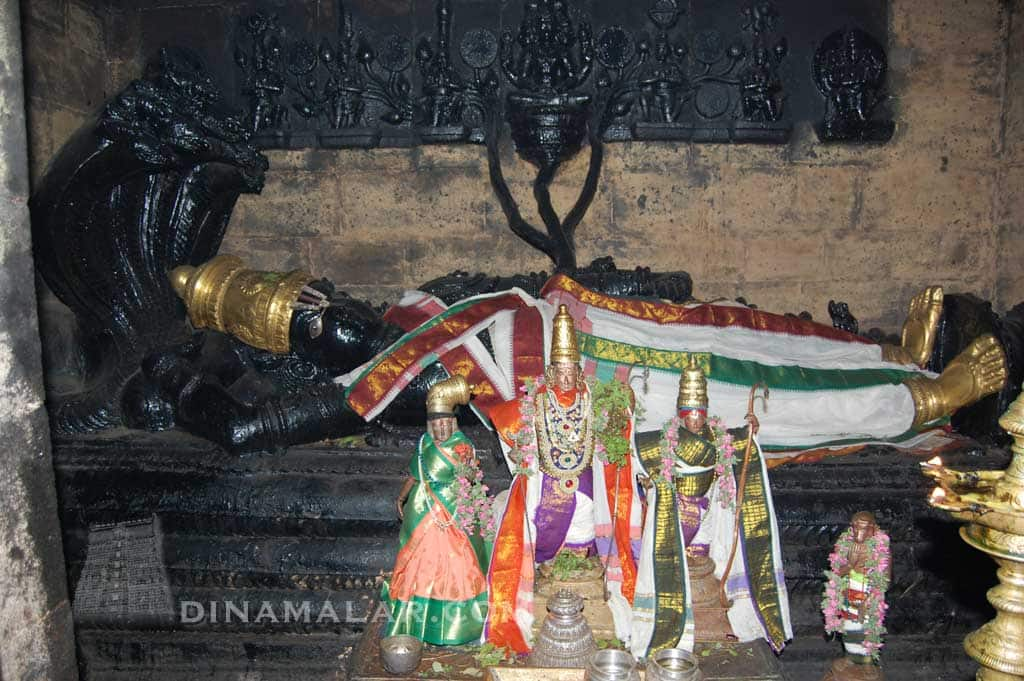GITA 6.40
The pushkarini of this temple is called Chakra Theertham, as in many temples, each having its own legend. The Chakra or Discus in the hand of the Lord is in the Prayoga [Ready for flying] style. Alwars state that all our infinite karma will be cut-off or destroyed by the Chakra. The greatness of the Chakra is in this Chakra theertham and so we can bathe or sprinkle the water on our heads, fearlessly. The canopy on the Garbha gruha -Vimanam- is called Suddha sathva vimanam.
 |
| Suddhasatva Vimanam with gopuram in the background |
We have seen that our body and mind are having a mixture of the three qualities, viz satva, rajo and tamasa. Rajo gunam originates desire and anger, while tamo guna creates ignorance and lethargy. Satva guna makes one to have sharp knowledge and clear understanding. A sight of this Vimanam, hence, will develop satva quality in us and reduce rajo and tamo gunas. Swami Parashara Bhatta, seeing the black coating inside the Vimanam in Sri Rangam temple says that earlier the Vimanam was white, just like the hood of the Serpent Adisesha. But the dazzling black colour radiated on the Vimanam by Sri Ranganatha, it also turned black! For better vision we employ eye cream. If we can use the blackness of the Vimanam as cream for our eyes, then we will become white; that is Satva quality symbolised by white colour will increase [Rajo and tamo are symbolised by red and black colours]. Viewing Vimanam in temple is good for us.
Slokas 37, 38 and 39 are all doubts raised by Arjuna. By this sloka 39, he conclusively asserts that his doubts can be cleared only by Sri Krishna:
etan me samsayam krishna
chettum arhasy asesatah
tvad-anyah samsayasyasya
chetta na hy upapadyate
chettum arhasy asesatah
tvad-anyah samsayasyasya
chetta na hy upapadyate
This is my doubt O Kṛṣṇa, and I ask You to dispel it completely. But for Yourself, no one is to be found who can destroy this doubt.
"This is my doubt, O Krishna, and I ask You to dispel it completely. But for You, no one is to be found who can destroy this doubt."
Etan = thus stated, me = my [Arjuna's], samsayam = doubt, asesata = created [in me, Arjuna], chettum = elimination, arhasy = You [Sri Krishna] are. Arjuna tells that his doubt has to be completely cleared by Sri Krishna. Tvad anya = other than You [Sri Krishna], samsayasyasya = this difficult doubt, chetta = clearing, na hy upapadyate = can not be found. Arjuna further continues that none other than Sri Krishna, he is able to find to clear his difficult doubt. This also can be considered as a surrender by Arjuna to Sri Krishna. Upanishads acclaim that by just having a darshan [sight] of the Lord, all our doubts are cleared. It says the granthi or knots in our hridaya or heart [symbolising mind] will all be loosened. Our infinite karma get destroyed. All these happen by just worshiping the Supreme God, Sriman Narayana. Arjuna is right, therefore, in asking Sri Krishna to clear all his doubts. There may be an apparent contradiction between the Upanishad saying and Gita sloka here. Upanishad says that a mere sight or darshan of the Lord will clear all doubts. Arjuna is facing the Lord here and so all his doubts should have vanished. Why then he is requesting to clear his doubt? Arjuna's doubts would have been cleared at the sight of the Lord; but then, it would not have benefited persons like us, who were not there when Gita was preached. Thondaradipodi Alwar was the eighth Alwar and has composed Thirumaalai on Sri Ranganatha, consisting of 45 pasurams. In pasuram Meyyarke meyyanagum... he says his doubts are cleared by the Lord. Doubts are dangerous, especially between couples, parents and children, brothers and sisters or friends. Doubts have to be cleared then and there, else they would make the person sleepless. Sri Ranganatha cleared all Alwar's doubts, not by asking him to study Vedas or Puranas, but by a mere show of His form. Is that so easy? Yes, all the doubts will vanish as we have darshan of the Lord. Doubts arise out of the three gunas. When we seek advise from a teacher, if the teacher also has the three qualities, then how can our doubts be eradicated? Sri Krishna is the embodiment of only satva guna and so it is not surprising that Arjuna says only He could clear his doubts. Our doubts could be many like whether God exists, is Atman different from body, do we accrue papa and punya by our actions? Doubts are endless. Once the doubts are cleared then we will be ready for yoga. Arjuna's doubt is about the fate of the person who has started yoga, after abandoning all other karma for worldly pleasures, but has discontinued yoga in the middle. Sri Krishna is his relative, friend and well meaning advisor. So, none else can advise him without any vested interest. God is not looking for any favour from the devotee and so He would advise the best for us. In fact, He gains by clearing our doubts as that would make us to devote ourselves more to Him and His intention is we all should be near Him. That is all. By misdirecting He does not gain. So, the advise would be honest and clear.
(continued)






